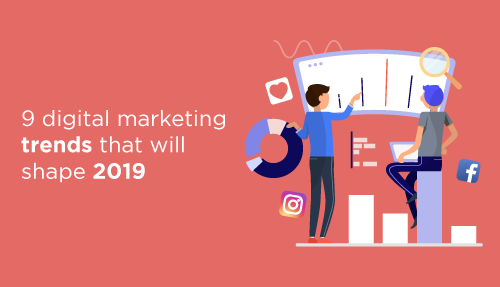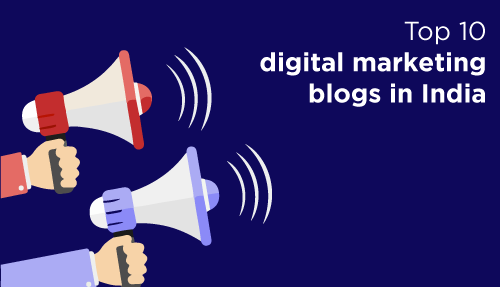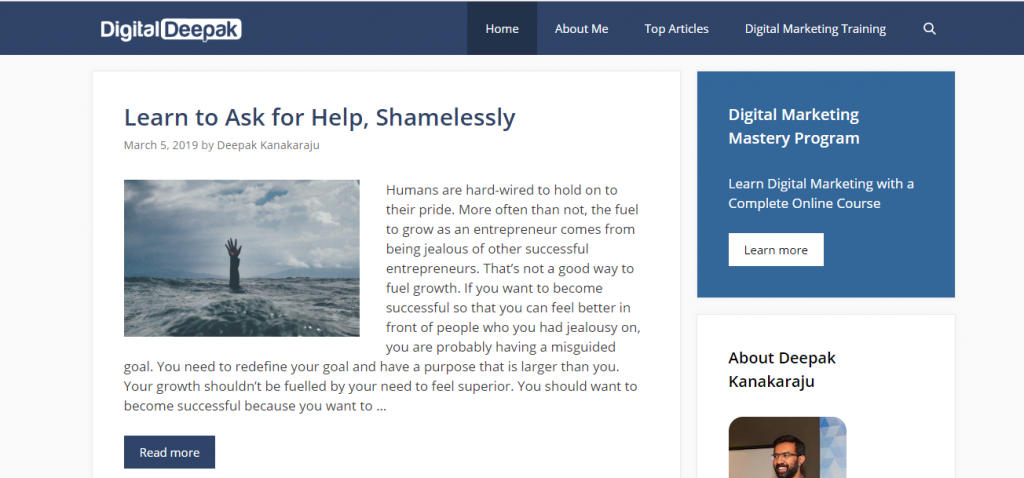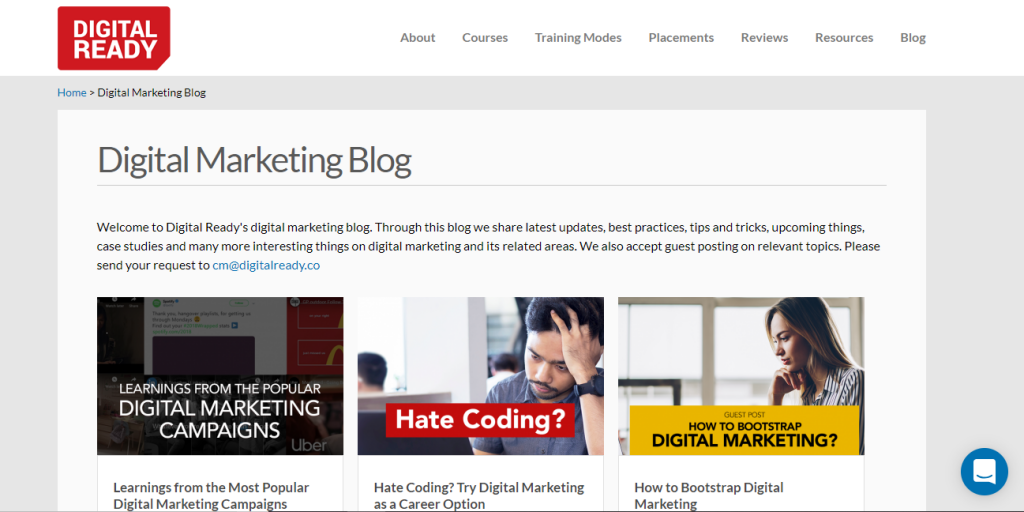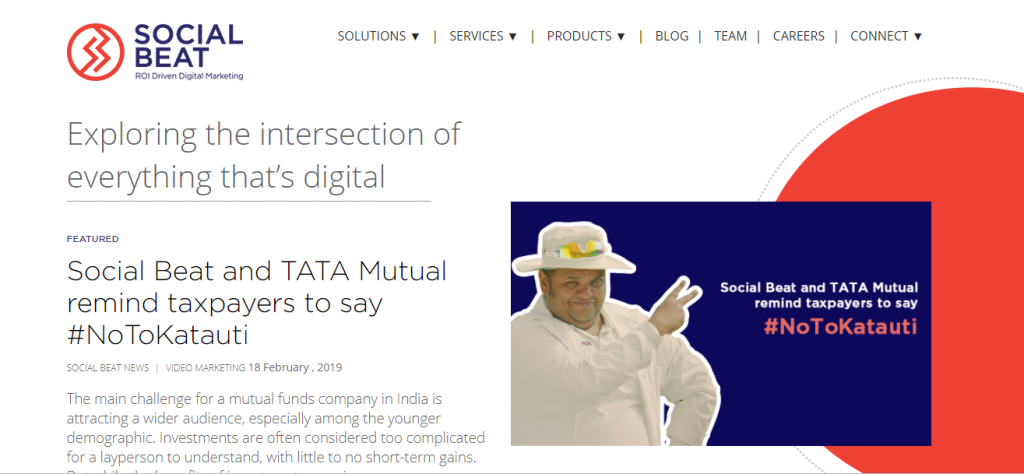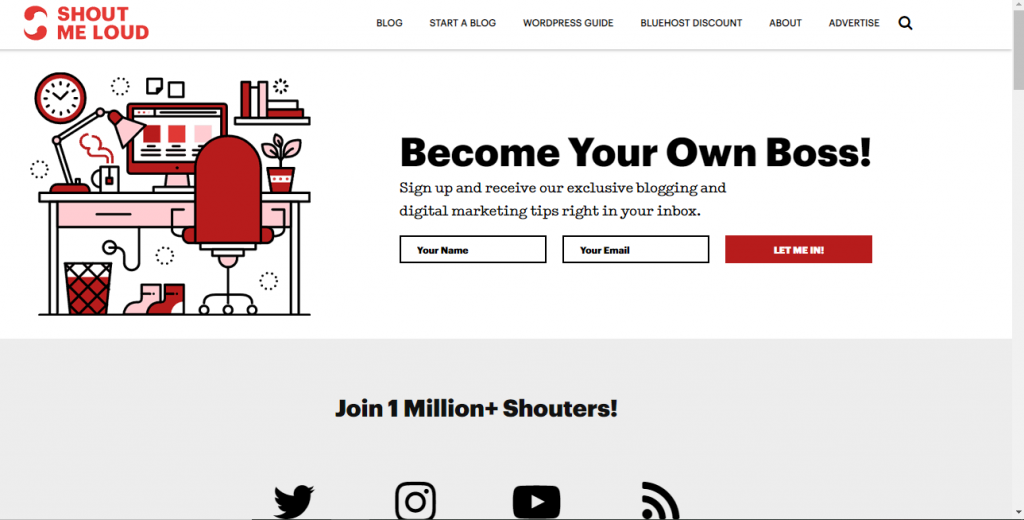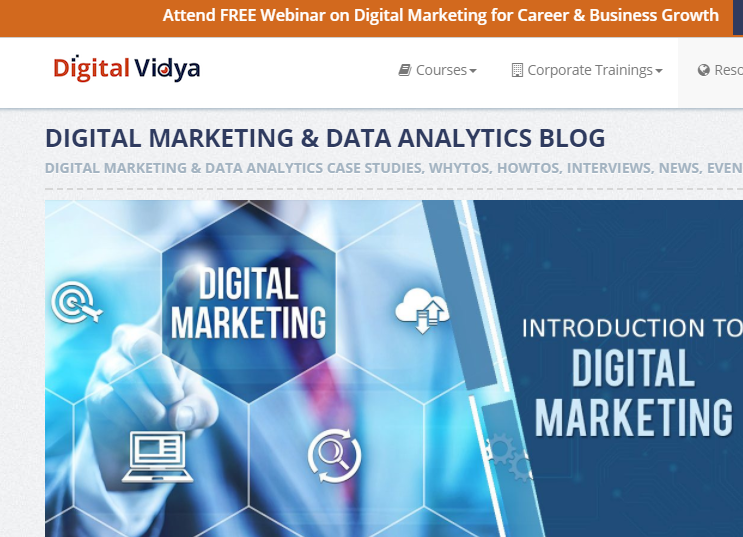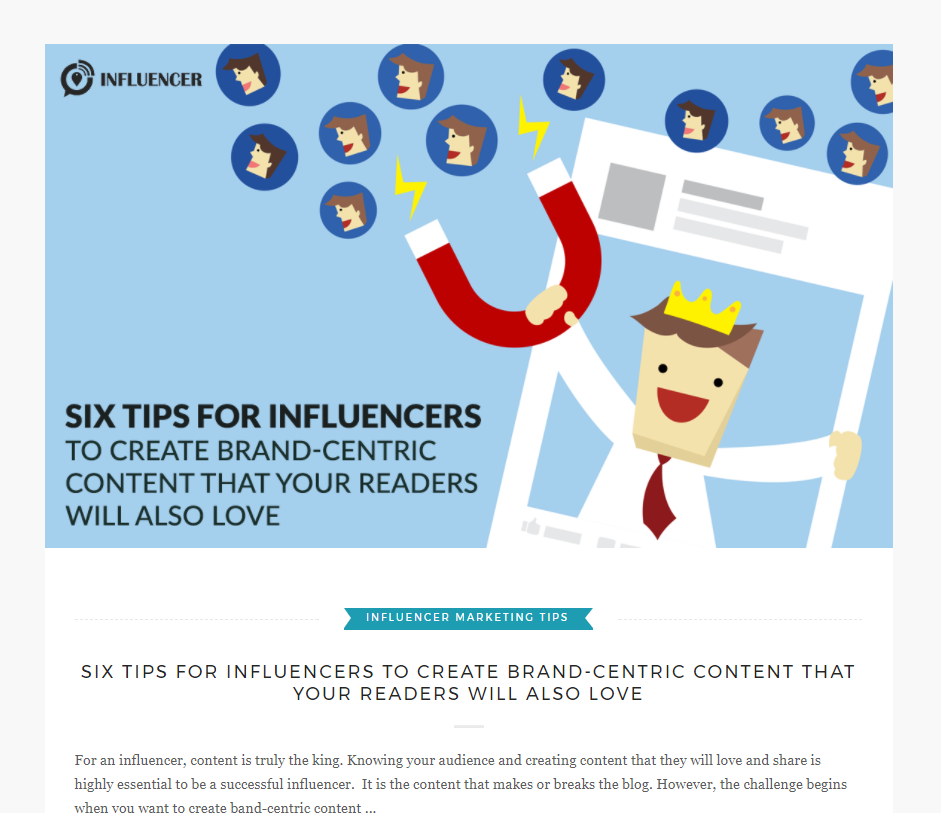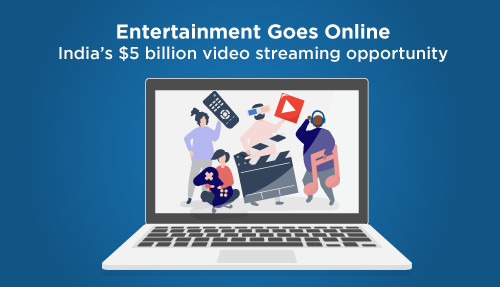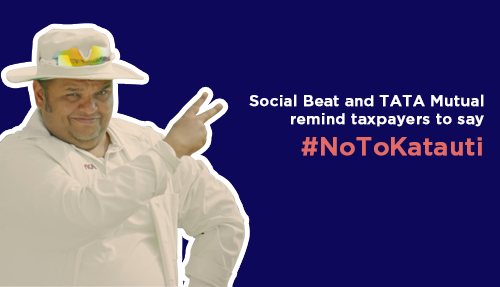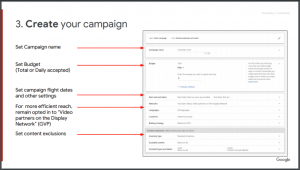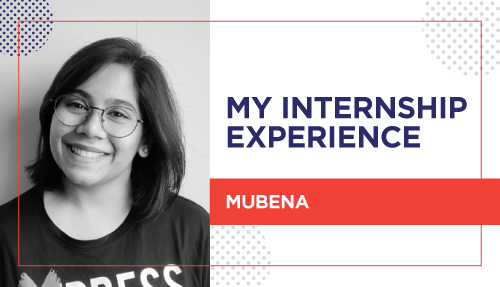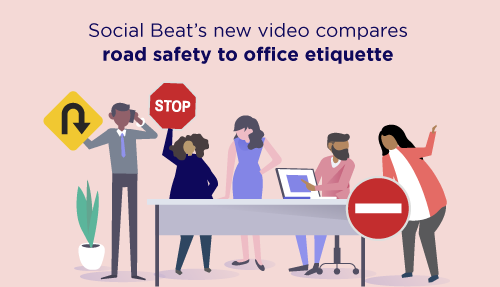It’s no secret that the world of digital marketing is constantly in a state of flux. What works today might be completely obsolete tomorrow. If your brand is still continuing to use the same techniques in 2019 as you did in the previous year, expect to see declining results. To ensure your brands stay on top of its digital marketing game this year, here are nine of the most important trends to stay ahead of.
An explosion of vernacular content online
The online space in India is set to get even more colourful and diverse. As even larger numbers of users get access to low-cost internet and affordable mobile phones, there will be a greater demand for internet content in the languages they understand best. To cater to this growing internet audience, brands need to push vernacular to the front and centre of their digital marketing strategy. Right from their websites, to their apps, social media campaigns, performance advertising and even social media listening, Indic languages should be the focus.
Speaking to regional audiences involves more than just taking a brand’s main communication and translating it into various languages. Instead, it requires them to develop communications aimed specifically at these audiences, keeping their unique needs, challenges and desires at the core. Only by doing this can they create that all-important personal connection with consumers. 22 Languages, one of the top vernacular startups, is designed specifically to help brands reach out to a larger audience in vernacular languages.
Read our case study on How Multilingual Ads Helped Generate Higher-Quality Leads With Lower CPL to learn how vernacular techniques can produce unprecedented results for your brand.
Growth of voice search
The seeds of voice search were sowed back in 2018, but it is in 2019 that this trend will fully come into its own. Today, it isn’t just mobile that’s driving voice search, but the proliferation of smart assistants like Amazon’s Alexa and Google’s Voice Assistant. The push for voice search will also be coming from the other end of the spectrum, from users who are just starting to use the internet or who might not even know how to type. But regardless of who the audience for voice search is, one thing is certain: SEO as we know it will have to change. Traditional keyword research will become obsolete since user queries will be completely different when using voice search. Voice also means that position zero, the ‘featured snippet’ will become even more coveted. 99% of voice search results draw from the featured snippet, so content creators will have to focus even harder on optimising their content for Google to pick it up.
Be sure to watch our detailed video on a complete guide to Voice Search Marketing for more tips and insights.
Videos and interactive content
While videos have been around for decades, they have only recently started exploding on digital platforms and social media. In 2019, if your brand doesn’t have a strong repertoire of engaging, high-quality videos, you could be missing out on a sizeable audience. YouTube, the world’s second largest search engine, can become even more essential in 2019. Through techniques like YouTube SEO, brands can ensure that their content is visible to relevant audiences. For tips on how to rank your videos, read our in-depth article: YouTube SEO Tips: The Secret Sauce to Ranking Your Videos in 2019.
But the importance of videos extends beyond just YouTube. Videos on landing pages and in emails have been shown to improve performance and conversions. Facebook is also witnessing a growing popularity of videos. In one survey, around 44% of respondents admitted to watching at least 5 videos every day on the platform.
As videos gain momentum, multiple video formats are also being developed and explored. Interactive videos are emerging as a popular option due to the higher user engagement they deliver. In these videos, users are required to take some form of action which can influence the video. This could be either in terms of the content displayed or the storyline that the video takes. Apart from interactive content, live videos are also creating a stir. Currently, they are available on Instagram and Facebook, while YouTube is also starting to introduce it. Live videos are a great way for brands to showcase ‘behind-the-scenes’ footage and develop a more personal connect with their audience.
Smarter interactive chatbots
Chatbots have been slowly making an entry from 2017, however, chatbots in 2019 will be more intelligent than ever before. Most chatbots currently have a limited script, usually offering a fixed set of options that users can choose from. Once the query is narrowed down, users are often transferred to a human representative to resolve it. With the advent of AI, however, chatbots are likely to completely replace the human aspect previous involved. They are programmed to be smarter, respond to a wide number of queries in a meaningful way and resolve issues without requiring any human intervention. In fact, through AI, chatbots are likely to be able to keep up a long conversation with users without coders having to input a long script beforehand. As the technology matures, you can expect chatbots to become even more ubiquitous as brands capitalise on their low cost and higher efficiency.
AI for better audience targeting
AI isn’t just for smarter chatbots; it is also becoming the most accurate way for brands to identify their core audience and develop core messaging for them. Through a combination of machine learning and artificial intelligence, predictive customer analytics can eliminate much of the guesswork involved with digital marketing.
One way they do this is by assigning a ‘lead score’ to leads generated. AI can analyse large volumes of leads at a time, identify common patterns, group them into various buckets based on their behaviour and help you create hyper-personalised content for them. Since personalisation is key to nurturing leads, AI can almost certainly lead to higher conversions for marketers. AI can also identify similarities in current consumers and generate custom targeting options that marketers can utilise to ensure more accurate delivery of ads. This will help improve the quality of leads generated via digital.
UX and AMP for desktop
Accelerated Mobile Pages (AMP) was a crucial mobile ranking factor for websites in 2018. In 2019, the importance of AMP will not be limited to mobiles alone. Google recently made AMP available for desktops versions of websites as well. With this feature, users will be able to enjoy the same speed and easy navigation that AMP offers even while browsing on their desktop.
With the introduction of this feature, it’s time for brands to re-look at their website and how user-friendly it is. By making their websites (or at least critical, content-heavy sections like blogs) AMP-friendly, brands might be able to enjoy greater visibility on search engines. Since AMP pages are also easier for users to navigate through, an improved UX can encourage them to spend more time on the website and learn more information about the brand.
Find out how AMP landing pages helped us achieve a 33% lower cost-per-lead.
Growth of Programmatic Advertising in India
In 2019, almost 65% of all digital media buying will be programmatic. Programmatic is without a doubt the most cost-effective, efficient way for advertisers to purchase digital ad space. Programmatic advertising is rapidly growing in India with Google Marketing Platform (GMP) leading the way. Unlike previous methods which required human intervention and manual bids, programmatic algorithms can determine the best media mix and automatically purchase it. This technology enables marketers to reach a scale previously unthought of. They can target larger audiences over a wider variety of channels with absolutely no time or effort lost. Since it can optimise in real-time, markets can do a lot more with their budgets and reduce their cost-per-leads.
Decline in organic search and traffic
With every new SERP feature that Google introduced, organic traffic takes a hit. Click-through-rates have been steadily dropping and 2019 will be a continuation of this trend. Answer boxes, for instance, answers a user’s query without them having to actually click on a link. So while your page might show up on a featured snippet, you might not notice a significant rise in organic traffic to that page.
So does this mean the sun has set on the SEO empire? Fortunately, no. This just means that marketers will need to re-align their SEO strategy. For example, they will need to start focusing more on creating brand awareness and driving up brand searches. When users start searching for your company’s name, Google cannot prevent users from clicking on your website. It also means tailoring your content specifically for higher click-through rates. You need to give users enough information that Google picks it up and displays it, but not enough for their curiosity to be satisfied. If users are only getting half an answer from your snippet, they are more likely to click on your page to get the full information.
Decline in organic reach on Instagram
Previously, organic reach on Facebook had taken a hit, with pages showing close to zero reach without paid promotions. In 2019, all signs are pointing towards Instagram going down the same route. As Instagram grows in popularity and adds new users every minute, it predictably wants brands to start paying for higher reach. If your company page doesn’t have adequate promotional budgets, then it’s time to scale up this year. But while showcasing your brand on Instagram might become more expensive, it’s still completely worth it. India currently has around 71 million active users and this number is only set to grow from here. Clearly, brands cannot afford to neglect this audience, paid or otherwise.
2019 is proving to be an exciting year for brands, giving them opportunities to experiment with new ad formats and strategies. By taking advantage of these upcoming trends, brands can gain a strong lead over their competition.
This article was originally published in Campaign India.
If you’re looking for more information into digital marketing trends that will shape India in 2019, do check out our co-founder Vikas’ in-depth video below.

